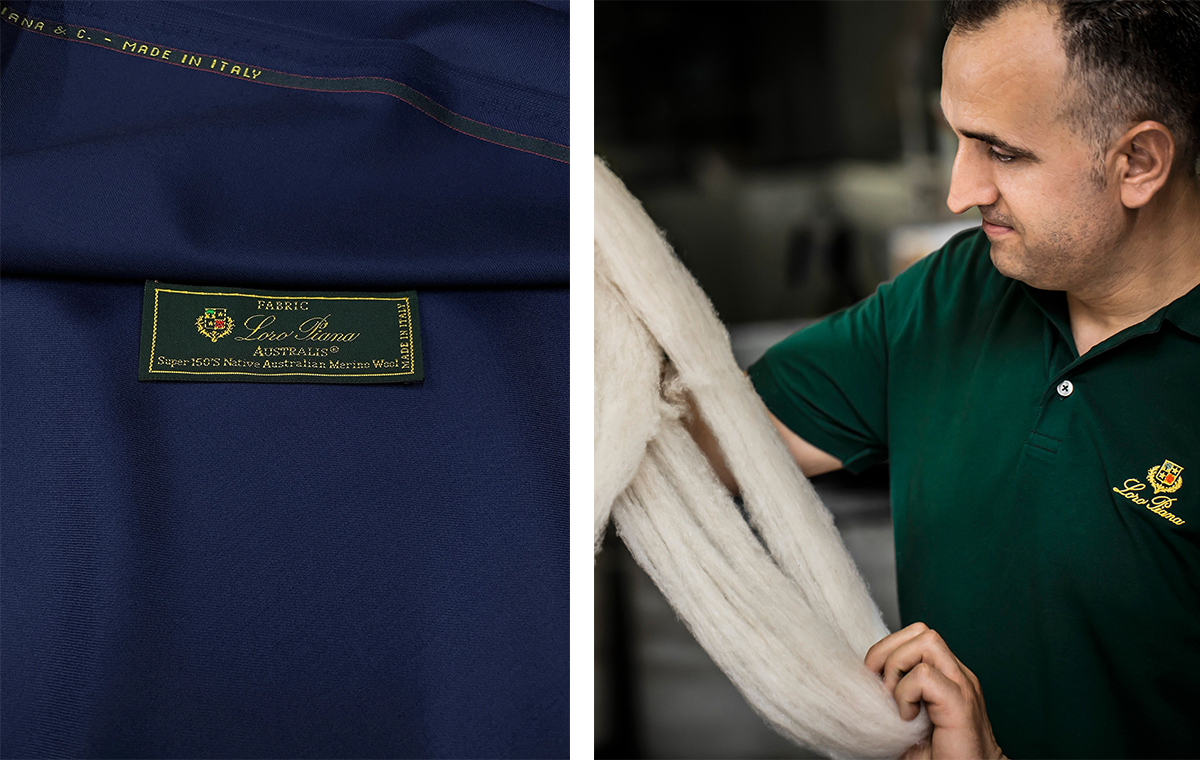
Why Italian Mills?
Our Head of Marketing, Rob O'Reilly, breaks down the provenance and importance of the northern Italian mills.
The world of tailoring is full of so many amazing stories of tradition and craftsmanship, particularly when it comes to the northern Italian mills behind our Luxury Range. Why are their fabrics so respected? Why are they pricier? And how do they fit into the culture and landscape of off-the-rack and custom tailoring brands? Because it’s Friday (and my favourite part of my job is riffing on these stories) I’ve listed out the ten things I think you need to know about luxury cloths and the mills that craft them.

Australian Merino wool is the chosen fibre. It’s the best in the business and beloved by both luxury mills and brands. We should be really proud of that, and it’s something we don’t shout loudly enough.

The mills all have their own unique story and sensibility, whether it’s in their techniques, aesthetics or blends. Ie. Stylbiella are known to craft bold and vibrant cloths, while Loro Piana revel in luxurious, decadent fibres and quality.

The Italian sense of style, their commitment to quality and their reputation in the world of tailoring can, to a large extent, be attributed to the mills. They drove this culture, in Italy and internationally. Before Zegna and Loro Piana were brands crafting their own garments and building their own luxury brands, they were mills, producing cloth for tailors. (They still are, of course, and we sell them).
A luxury suit can be viewed as a three-step process: the Australian woolgrower responsible for the fibre, the Italian mill turning into a high quality cloth, and the tailor (or brand) using that cloth in a final garment.

On the whole, brands and tailors have access to the same fabrics. Which mills and cloths they stock is up to them.
An off-the-rack brand, even if it’s a luxury brand, is obviously more limited in the amount of fabrics they craft into “ready to wear” suits (you can only stock so many suits in your store). You’ll therefore be more limited in the range of cloths you can access and be tied to however the brand designs (and prices) the suit from that cloth.
Within the world of “custom tailoring” all price points and levels of quality exist, from Savile Row bespoke garments from over $10k to Hoi Ann tailors at budget prices.
Lower end tailors won’t sell or build partnerships with luxury mills, so they’re likely to use inferior fabrics (think: polyester blends or poorer technical processes).
Higher end tailors will access all of them (and may even have access to more prestigious, valuable or limited cloths).

Brands and tailors will price MTM and off the rack suits crafted from Italian-milled however they want, with huge variations. For example, I designed a navy pinstripe suit from a lovely Loro Piana Australian Merino wool cloth for just under $2k last year. It’s expensive, sure (and certainly compared to our Australian Merino wool core range, where you can design a custom MTM suit for $699) but Loro Piana represent the absolute pinnacle of quality and prestige. But I got to design the garment exactly as I wanted it, utilising one of the most acclaimed cloths in tailoring, to my precise body measurements. On Mr Porter right now, the cheapest pair of “ready to wear” Tom Ford trousers (only) is priced at just under $1,800 Aussie dollars. The quality, I’m sure, is fantastic, but you’re clearly paying a very hefty premium for the brand.



